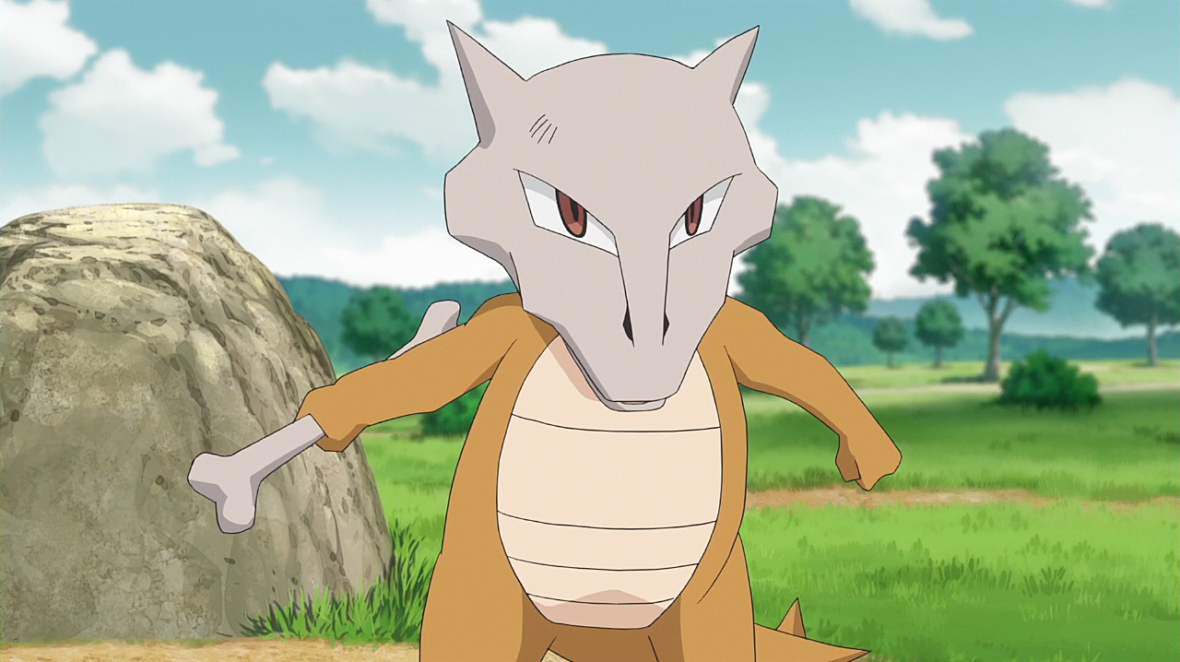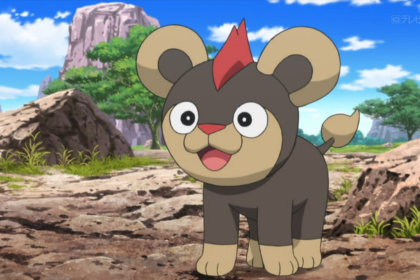Marowak is a Ground type Pokemon introduced in Generation I. It evolves from Cubone starting at level 28. In Alola, Marowak has a Fire and Ghost type regional form. It evolves from Cubone when leveled up at night starting at level 28. All Cubone in Alola evolve into this form regardless of their origin. Take a look below for 28 fun and fascinating facts about Marowak.
1. Marowak is a bipedal Pokemon with light brown skin and a cream colored underside.
2. Two small claws, one on each hand, serve as its thumbs, and one large nail on each foot make up its toes.
3. It has a short tail with a small spike near the tip.
4. Marowak’s head is composed of the skull it once wore as a mask.
5. It can no longer remove the skull, which has become part of its body.
6. The skull has two pointed spikes on the back similar to ears and tiny nostrils on the tip of the snout.
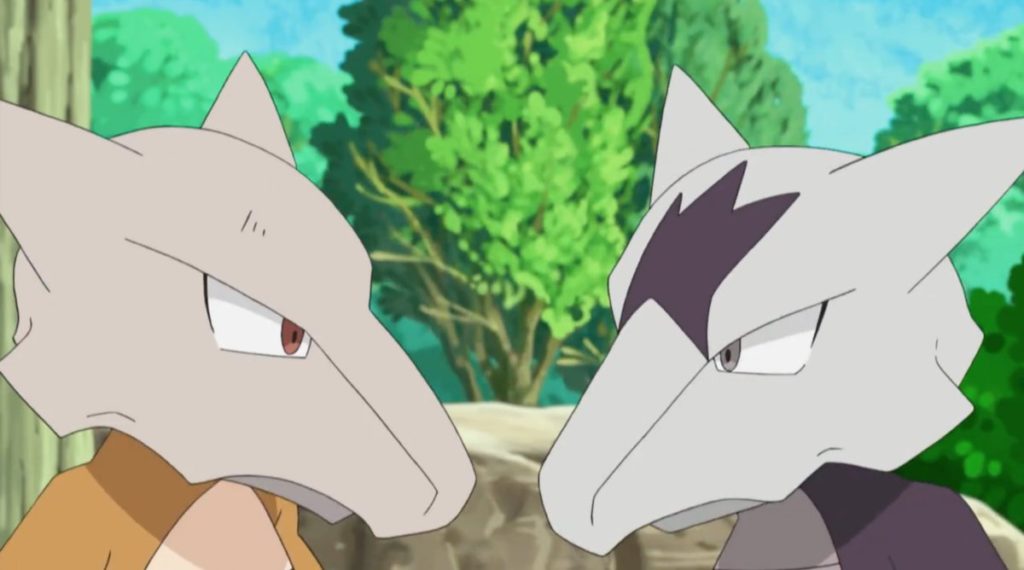
7. Marowak’s triangular, brown eyes are also located in the skull.
8. Marowak is well known for ferocity with its bone club, which it is said to collect from a hidden graveyard.
9. It and its pre-evolution, Cubone, are the only known Pokémon that can learn Bone Club and Bonemerang and the only Pokémon capable of using the Thick Club item.
10. Upon evolution, Marowak has overcome the grief of its mother’s passing.
11. Now ferocious and violent, Marowak is an adept combatant that uses the bone it carries as a weapon and a boomerang.
12. Having evolved, it seeks vengeance on its natural enemy Mandibuzz, which prey on Cubone because of its naturally weak and timid demeanor.
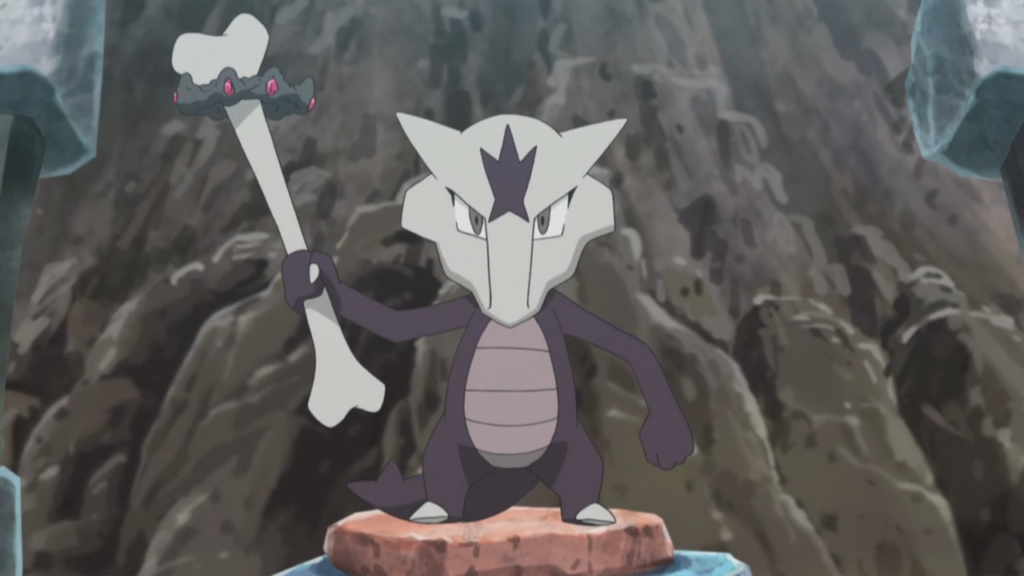
13. Marowak has also been recorded pounding on boulders with the bone club it carries in order to tap out messages to others.
14. It lives in mountains to test its skills.
15. In the Alola region, Marowak was faced with an abundance of its natural enemies, Grass-type Pokémon. This harsh environment led it to bond closely with its friends, which is said to have created a sort of sixth sense and caused it to take a new form.
16. Alolan Marowak’s body is black and it has pale grey eyes. There is a dark, flamelike mark on its skull between the eyes.
17. Compared to regular Marowak’s squatter, thicker body, Alolan Marowak is relatively thin. White markings resembling shoulder blades, vertebrae, and hip bones are visible on its back.
18. The bone Alolan Marowak uses is longer than the one regular Marowak uses. It customarily mourns its companions by burying them and dance in mourning.
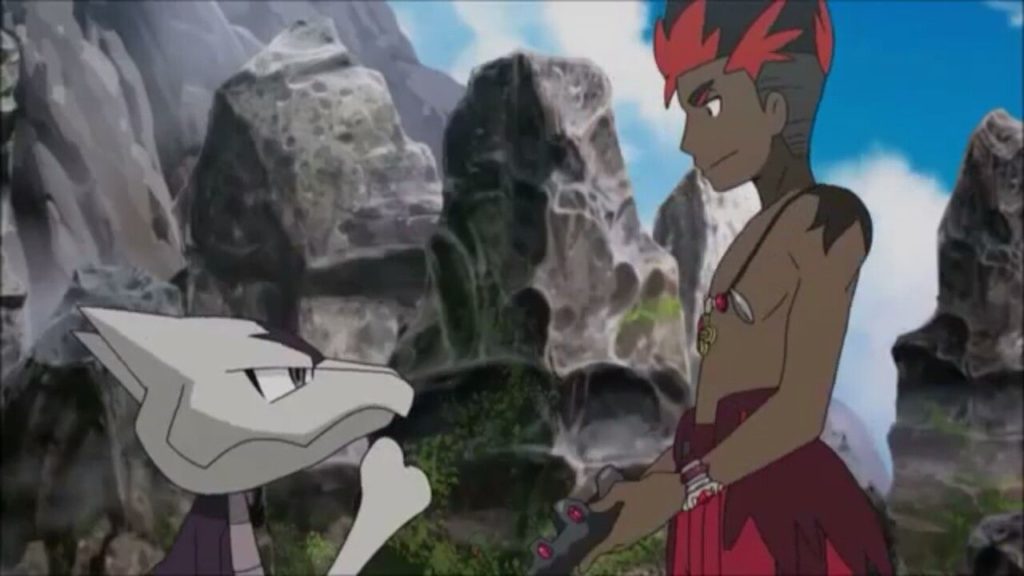
19. Alolan Marowak rubs the bone it wields against its forehead to light the ends in a green flame, and then twirls the flaming bone. It specializes in an attack where it releases a weak ball of flame from its bone that will relentlessly pursue its foe.
20. Alolans would fear it for a conjurer, due to its rarity and the fearful sight of it dancing with its bone.
21. Once its flames have spread onto an opponent, they are impossible to put out with water.
22. Alolan Marowak is the only known Pokémon that can learn Shadow Bone.
23. In the Pokémon Red and Blue beta, Marowak was originally known as “Guardia”. This is the Spanish word for guardian.
24. According to some of Marowak’s Generation II and IV Pokédex entries, somewhere exists a legendary Marowak graveyard. This is a reference to the elephants’ graveyard of modern myth.
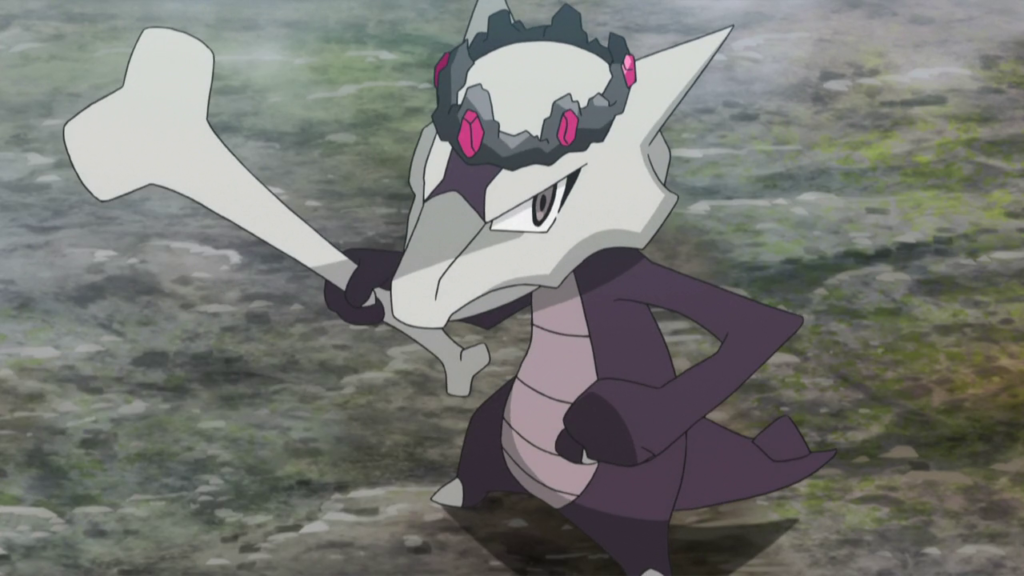
25. Alolan Marowak is the only dual-type Pokémon that shares no types with its pre-evolution.
26. Alolan Marowak, Weavile, and Porygon-Z are all the same weight as Dawn.
27. Though Alolan Marowak shares the Ability Rock Head with Cubone, a Cubone with Rock Head cannot evolve into an Alolan Marowak with the same Ability, as Rock Head is Cubone’s first Ability and Alolan Marowak’s Hidden Ability.
28. Marowak is reptilian in nature and seems to be loosely based on bipedal dinosaurs. It also could be based on primitive cultures that wore bones for decoration and used them for weapons. The use of its bone as a boomerang and as a weapon at the same time seems to be a reference to the boomerang’s original use for hunting in Indigenous Australians cultures.

